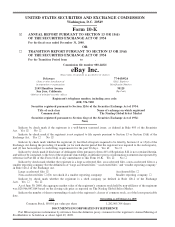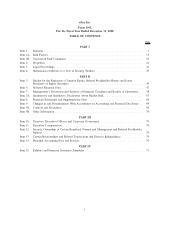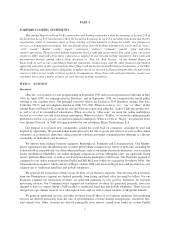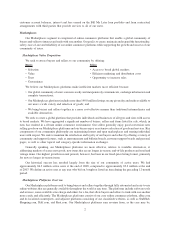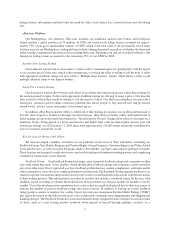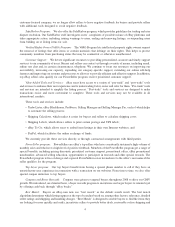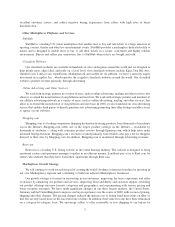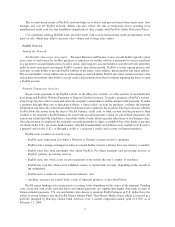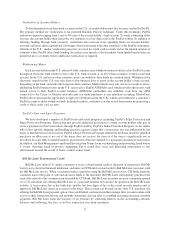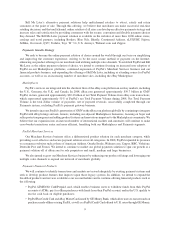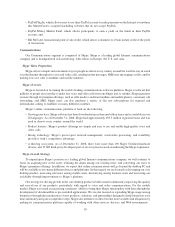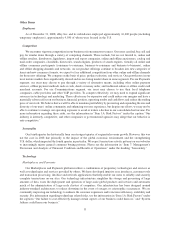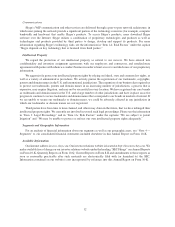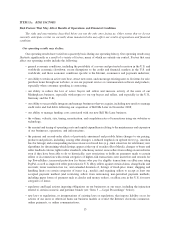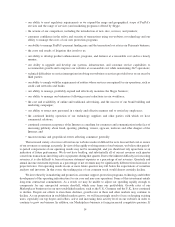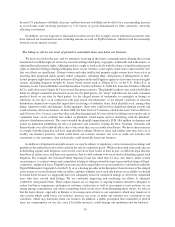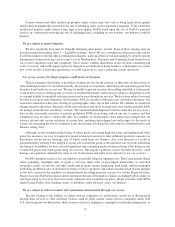eBay 2008 Annual Report Download - page 15
Download and view the complete annual report
Please find page 15 of the 2008 eBay annual report below. You can navigate through the pages in the report by either clicking on the pages listed below, or by using the keyword search tool below to find specific information within the annual report.The account-based nature of PayPal’s network helps us to detect and prevent fraud when funds enter, flow
through, and exit the PayPal network. Sellers can also reduce the risk of transaction losses resulting from
unauthorized credit card use and fraudulent chargebacks if they comply with PayPal’s Seller Protection Policy.
U.S. merchants offering Bill Me Later provide buyers with various transactional credit arrangements at the
point of sale, which may help to increase sales volume and average sales orders.
PayPal Overview
Joining the Network
PayPal offers three types of accounts: Personal, Business and Premier. A new account holder typically opens
an account to send money for an eBay purchase or a purchase on another website, a payment for services rendered,
or a payment to an individual in lieu of cash or check. Allowing new account holders to join the network when they
make or receive payments encourages PayPal’s natural, user-driven growth. PayPal’s account sign-up process asks
each new account holder to provide PayPal with his or her name, street address, phone number and email address.
The account holder’s email address serves as the unique account identifier. PayPal also offers certain customers who
sell on their own websites the ability to accept credit card payments from buyers without requiring the buyer to open
a PayPal account.
Payment Transaction Overview
Buyers make payments at the PayPal website, at the eBay.com website, or at the websites of merchants that
have integrated PayPal’s Website Payments or Express Checkout features. To make a payment at PayPal’s website,
a buyer logs in to his or her account and enters the recipient’s email address and the amount of the payment. To make
a payment through eBay.com or merchant websites, a buyer selects an item for purchase, confirms the payment
information and enters his or her email address and password to authorize the payment. The buyer chooses whether
PayPal debits the money from the buyer’s PayPal balance, credit card, or bank account and the payment is then
credited to the recipient’s PayPal balance. In some bank account payments (which we call eCheck payments), the
transaction is held until the funds have cleared the sender’s bank, which typically takes three to five business days.
Once the payment is completed, the recipient can make payments to others or withdraw his or her funds at any time
via check (in the U.S.), electronic funds transfer, a PayPal-branded debit card (which is only available to U.S. users),
a prepaid card (in the U.K.), or through a credit to a recipient’s credit card account (in limited markets).
PayPal earns revenues in several ways:
• PayPal earns transaction fees when a Business or Premier account receives a payment;
• PayPal earns a foreign exchange fee when an account holder converts a balance from one currency to another;
• PayPal earns fees from merchants who utilize PayPal’s Pro direct payment card processing services or
Payflow gateway processing services;
• PayPal earns fees when a user receives payments from outside the user’s country of residence;
• PayPal may earn fees when a user withdraws money to certain bank accounts, depending on the amount of
the withdrawal;
• PayPal earns a return on certain customer balances; and
• Ancillary revenues are earned from a suite of financial products, as described below.
PayPal incurs funding costs on payments at varying levels depending on the source of the payment. Funding
costs associated with credit card and debit card funded payments are significantly higher than bank account or
balance-funded payments. U.S. account holders who choose to maintain PayPal balances in U.S. dollars have the
ability to sweep balances into the PayPal Money Market Fund. This Money Market Fund, which is invested in a
portfolio managed by Barclays Global Fund Advisors, bore a current compound annual yield of 0.52% as of
February 12, 2009.
7


